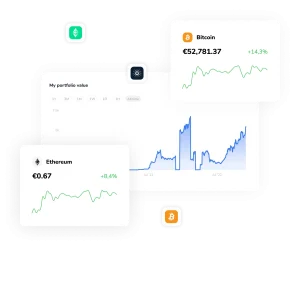
Are you considering investing in stocks but need help knowing where to start? Or are you an experienced trader looking for insight into how economic indicators can influence your stock trading decisions? In either case, this article is for you. By the end of it, you will better understand the impact that specific macroeconomic indicators can have on the stock markets and how they should be integrated into every investor’s decision-making process.
We’ll explore topics such as GDP growth rates, unemployment figures, consumer sentiment surveys, and more – arming you with the knowledge necessary to make smarter investment choices. So, prepare to take an eye-opening journey through the exciting stock trading indicator analysis world.
Introducing Economic Indicators – What They Are and How They Impact Stock Trading
Economic indicators play a crucial role in providing valuable insights into the economy’s overall health. They serve as signs or signals that measure the growth and efficiency of markets and industries, ultimately influencing the stock market. With a comprehensive understanding of these indicators, stock traders can rely on guesswork or intuition, leading to potentially risky decisions.
By carefully analysing economic indicators, traders can make more informed decisions regarding which stocks to buy or sell and when to make those moves. This knowledge allows them to stay ahead of the market and increase their chances of making profitable trades.
Moreover, staying up-to-date on the latest economic indicators is essential for traders. It enables them to remain informed about the changing dynamics of the economy and adjust their strategies accordingly. Whether it’s monitoring vital economic data such as GDP growth, employment rates, or consumer spending, closely following these indicators provides traders with a deeper understanding of the true nature of the economy.
Understanding Gross Domestic Product (GDP) and Its Role in the Economy
GDP is one of the most important and widely used economic indicators. It measures the total value of goods and services produced within a country’s borders in a specific period, typically annually or quarterly. GDP growth rate, which indicates how fast a country’s economy is growing or shrinking, significantly impacts the stock market.
When GDP growth is strong, it signals a healthy economy, leading to increased consumer spending and business investment. It, in turn, drives stock prices up as companies become more profitable. On the flip side, a decreased GDP growth rate or even negative growth can result in lower consumer spending and reduced business confidence – factors that lead to a decline in stock prices. Therefore, traders closely monitor GDP figures because they provide crucial insight into the state of the economy and potential changes in stock market trends.
Exploring the Effects of the Consumer Price Index (CPI) on Stock Prices
The Consumer Price Index, or CPI, is another essential economic indicator that measures inflation by tracking the prices of goods and services over time. A high CPI indicates rising costs, while a low CPI suggests deflation, which can significantly impact stock market performance.
When inflation rises, it increases the cost of production for companies, leading to lower profits and potentially causing stock prices to drop. On the other hand, deflation can result in lower consumer spending and reduced company revenues, negatively impacting stock prices. Therefore, traders should pay close attention to CPI figures to anticipate potential changes in the stock market.
Analysing the Impact of Unemployment Rate on Investing Strategies
The unemployment rate, a crucial economic indicator, measures the percentage of individuals in the workforce who are currently jobless. Its impact on stock market trends is significant, as it reflects an economy’s overall health and stability.
A low unemployment rate typically signifies a thriving economy, fostering increased consumer spending and business confidence. This positive environment can drive stock prices upward, providing opportunities for investors. On the other hand, a high unemployment rate can indicate an economic recession, resulting in reduced consumer spending and limited business growth. These factors can cause stock prices to decline, posing challenges for traders.
Therefore, traders must stay well-informed about unemployment figures. By understanding the labour market dynamics, investors can make more informed decisions and navigate the stock market with greater precision.
Examining the Relationship Between Inflation & Interest Rates and Share Prices
Inflation and interest rates are closely linked to stock market performance, making them critical economic indicators for traders. When inflation rises, central banks may increase interest rates to control it – which can lead to higher borrowing costs for businesses and individuals. It often results in decreased consumer spending and reduced company profits, ultimately causing stock prices to fall.
On the other hand, when interest rates are low, consumers may have more disposable income and be more likely to spend, leading to increased business revenues and potentially driving stock prices up. Therefore, traders should keep a close eye on changes in inflation and interest rates to make well-informed trading decisions.








